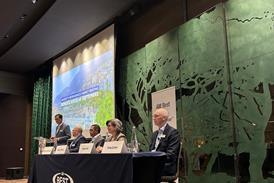We're always hearing dramatic stories about the effects of climate change. More storms, more floods, more extreme temperatures and, inevitably, more insurance claims.
The insurance industry has recognised for some time that natural perils are becoming a more costly problem. And it's not just climate change driving the issue. Planning pressures and the resulting building on flood plains and brownfield sites have left increasing numbers of properties vulnerable to weather-related risks.
Although they may be on the increase, cover for these risks is a fundamental part of property insurance, and our members want to continue to provide it wherever they can.
So a key part of our work at the Association of British Insurers, is to provide members with accurate information about these risks, and insurers' exposure to them. Often, this work acts to reassure companies that they are not overexposed. Sometimes, where the risks are high and increasing, it can also help with planning reinsurance arrangements.
Householders and businesses feel the practical effects of this research too. We can (and do) use it in our representations to the government. We want to be able to provide affordable cover against weather-related risks, and research can demonstrate where there are problems that need to be addressed if we are to continue to do so.
This partnership approach is now also being developed with research on other weather-related issues, including windstorm and subsidence. The government's own research has also been a useful tool for the insurance industry. For example, the UK Climate Impact Programme (UK CIP) has produced good, reliable data, and a series of realistic “climate change scenarios” that have helped provide a baseline for all interested parties (including insurers).
One of the most pressing issues for insurers continues to be flooding. ABI was closely involved with the Environment Agency's recent Flood Awareness Week, designed to raise awareness of the risk of flooding, and to encourage householders to be as well-prepared as possible. Over the longer term, ABI's research on flood-risk areas has helped the relevant government departments pinpoint the parts of the country most at risk, and therefore target preventative action in the most efficient way. We hope to do a lot more work in this area so that insurance cover can continue to be available in areas more vulnerable to flood events.
The most recent ABI research on flooding, Inland Flooding: The Risks Faced by the Insurance Industry, is due to be published later this month. The findings are pretty interesting, but you'll have to wait until it's formally launched to see these.
But, I can tell you about some of the report's key recommendations. They probably won't come as any great surprise, and they confirm that our approach to flood – and other weather-related – research has been right.
First, the report says more work needs to be done to assess how insurers can best identify priority areas for flood defence, especially areas which are at risk because of sub-standard flood defences.
Next, we need to continue to work with the relevant agencies to make sure the true financial consequences of flood events are reflected in government flood warning and defence spending.
And, lastly, we must get better at sharing and collating information. This doesn't just apply to flooding. There is a huge volume of useful information out there, and, if we are to cope with climate change, and provide as much cover as possible for those at risk, we must become more efficient about finding, using and developing our knowledge about climate change and its impact.









































